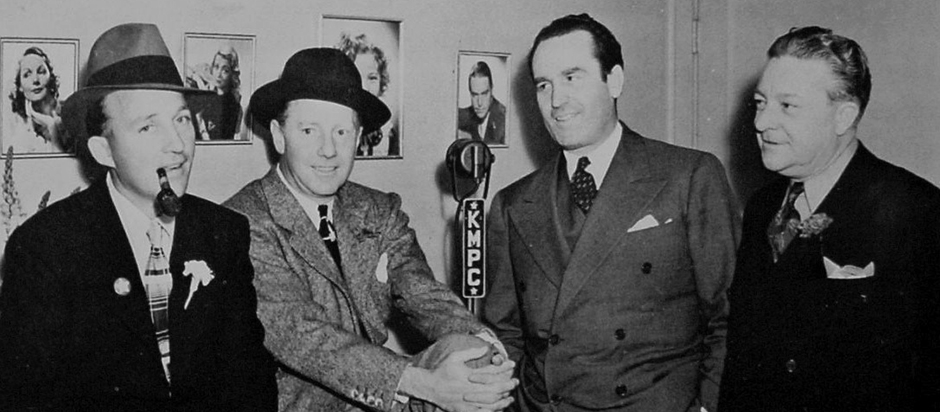The Great War was over, cars were multiplying on the streets, radios were crackling in living rooms, plastics were hitting the market and theatres were attracting people with newfangled moving pictures. Science and technology were roaring ahead. It was, after all, the “Roaring Twenties.” But in Vienna, there was another kind of roar. It was emanating from thousands of older men who claimed to have regained their virility through what seemed to be a stunning advance in medicine. They had been “Steinached!” The men had undergone a 20-minute procedure introduced by Dr. Eugen Steinach in which one of their seminal ducts was tied off. In other words, the men underwent a partial vasectomy. The goal wasn’t prevention of pregnancies, it was rejuvenation.
Steinach’s work was stimulated by French physiologist Charles-Édouard Brown-Séquard’s seminal lecture delivered to members of La Société de biologie in 1899 in which he described having injected himself with filtered extracts from the crushed testicles of young dogs and guinea pigs to regain the vigour and intellectual stamina of his youth. The professor had also tested himself with a dynamometer, a device that measures mechanical force, and found that his muscle strength had also been renewed. He capped off the lecture by telling his rapt audience that just hours earlier he had passed the final test of his experiment by “paying a visit” to his young wife.
The scientific community, however, did not buy Brown-Séquard’s claim that the key to rejuvenation was injection of minced gonads. The prestigious Boston Medical and Surgical Journal opined that “the sooner the general public and especially septuagenarian readers of the latest sensation understand that for the physically used up and worn out there is no secret of rejuvenation, no elixir of youth, the better.”
Biology professor Eugen Steinach, however, thought Brown-Séquard’s work with gonads was worth pursuing and turned to transplanting the testes of a male guinea pig into a female. She then exhibited mounting behaviour characteristic of a male. Steinach concluded that the gland’s secretions were responsible for sexuality and even theorized that homosexuality in men could be treated by transplanting a testicle from a “normal” man into a recipient in need of “remasculinization.” Thankfully that idea didn’t fly, but surgeon Serge Voronoff’s notion of grafting monkey gland tissue onto the testicles of aging men did.
While serving as physician to the king of Egypt, Voronoff had noted that the court eunuchs were often sickly and seemed to age very quickly. The testes, he concluded, played an important role in maintaining vigour, and that “possession of active genital glands was the best possible assurance for a long life.” In 1918, he believed he made his point when he restored an aging ram’s youthful vitality by transplanting the testes of a young lamb.
Voronoff upped the ante by transplanting the testes of executed criminals into aging men rich enough to pay for the procedure. But demand soon outstripped supply, and since few young men were willing to part with their precious parts even for rich compensation, Voronoff came up with an alternative scheme. He would transplant bits of chimpanzee and monkey testes onto the genitals of elderly men. Eventually more than a thousand men underwent the monkey gland treatment at the hands of doctors around the world, with the requisite material often being supplied by a monkey farm Voronoff set up on the Italian Riviera.
Steinach bought into Voronoff’s idea, but thought that the benefits ascribed to transplants could be achieved by an alternate procedure. Damming the seminal canal would stimulate the testes to produce more male hormones! At the time, researchers had determined that there were two types of tissues in testicles. Seminal tubules produced spermatozoa, but there were also “Leydig” cells between the tubules that released sex hormones. Steinach’s idea was that the two types of tissues compete for nourishment, and that stifling the sperm-producing tissues would boost the production of the sex hormones.
In his book, Sex and Life, Steinach described how his patients “changed from feeble, parched, dribbling drones, to men of vigorous bloom who threw away their glasses, shaved twice a day, dragged loads up to 220 pounds, and even indulged in such youthful follies as buying land in Florida.” He believed in his procedure so strongly that he “thrice reactivated himself.” It isn’t clear what he meant by “thrice,” because once the duct is tied off, it’s tied off. Whatever improvement Steinach and his patients felt was probably due to wishful thinking, because as we now know, vasectomies do not boost hormonal output by the testes.
Steinach had testimonials galore, including from some very famous people such as Sigmund Freud, who underwent the procedure when he was 67 years old, hoping to improve his “sexuality, his general condition and his capacity for work.” William Butler Yeats, the famed writer, was Steinached when he was 69. “It revived my creative power,” Yeats wrote in 1937. Apparently in more than one way. The doctor who performed the snip invited a woman half Yeats’s age to dinner with the aim of allowing the writer to make a connection and test out his newly embellished virility. It seems the outcome was successful, with Yeats publicly reporting on his “second puberty,” leading to the Dublin press nicknaming him the “gland old man.”
While it is now clear that Brown-Séquard, Voronoff and Steinach promoted procedures that did not have the claimed efficacy, they did lay the foundations for further research that resulted in the isolation of testosterone, the male sex hormone. In 1927, University of Chicago chemistry professor Fred Koch isolated 20 milligrams of a substance from 20 kilos of bull testes that remasculinized castrated roosters, pigs and rats. By 1935, Schering’s Adolf Butenandt had worked out the molecular structure of testosterone, the active compound in the bull testes, which allowed him to come up with a chemical synthesis from cholesterol. Today, testosterone and various derivatives are prescribed to men with low blood levels who often claim to experience the effects that were thirsted for by men who subjected their privates to the scalpels wielded by Drs. Steinach and Voronoff in the Roaring Twenties.







